Community Emergency Response Team
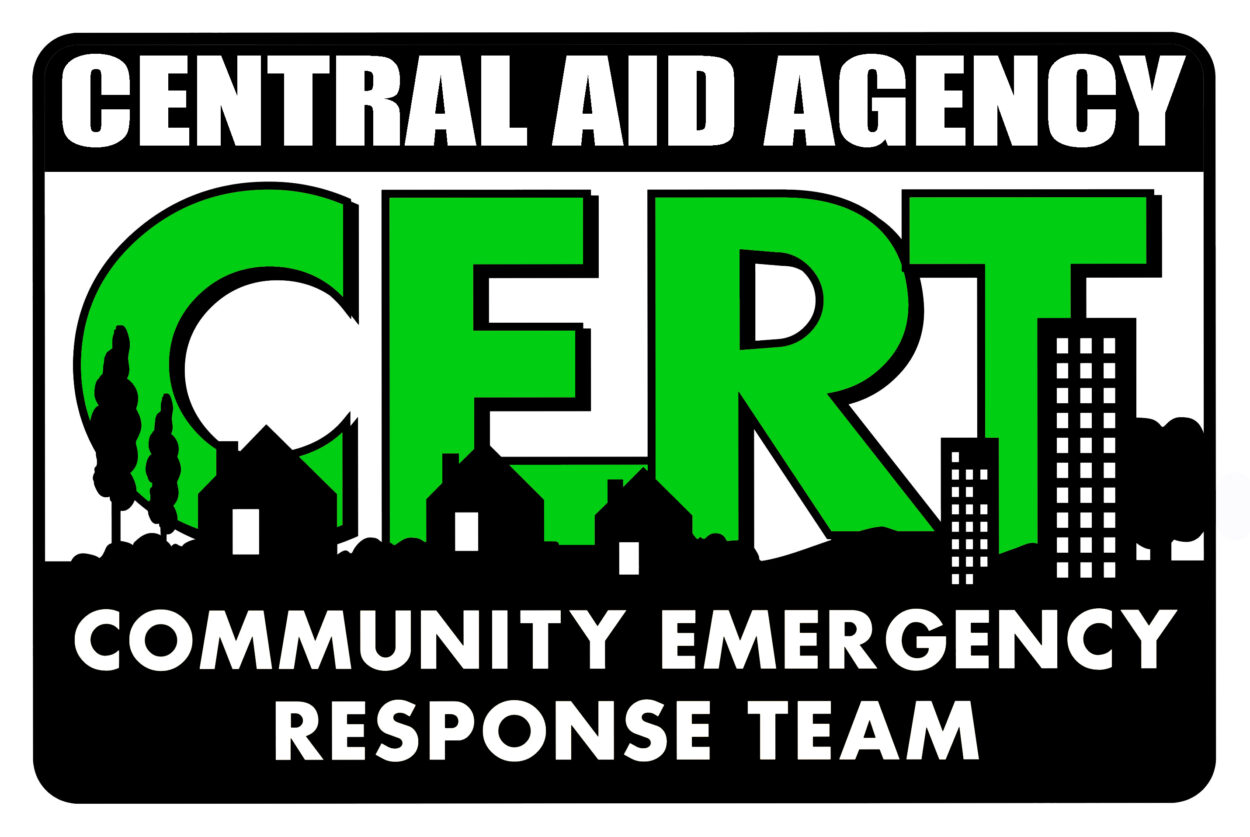
Central Aid Agency CERT is a federally registered Community Emergency Response Team (CERT) program operated by the Central Aid Agency in partnership with Training Solutions International. The goal of the program is to deploy to disaster and emergency situations, and to better prepare the community and the general public to respond to all hazard incidents. The program serves the Junction City and greater Lane County areas and also works with other CERT programs operating in the region.
Central Aid Agency CERT conducts Basic Training Courses as well as ongoing training for CERT team members and members of the community. The program also engages in community outreach presentations focusing on disaster preparedness and resiliency.
Central Aid Agency CERT is open to any member of the community interested in becoming more prepared and resilient. We welcome both experienced CERTs who have already been trained, as well as those new and looking to learn.
Central Aid Agency CERT is deployed by the Central Aid Agency in conjunction with C.A.A. Emergency Response Force 1.
Central Aid Agency CERT conducts Basic Training Courses as well as ongoing training for CERT team members and members of the community. The program also engages in community outreach presentations focusing on disaster preparedness and resiliency.
Central Aid Agency CERT is open to any member of the community interested in becoming more prepared and resilient. We welcome both experienced CERTs who have already been trained, as well as those new and looking to learn.
Central Aid Agency CERT is deployed by the Central Aid Agency in conjunction with C.A.A. Emergency Response Force 1.
Membership Details
- To join, members must submit a membership application. Our CERT program is open to any member of the community and is not directly related to our faith mission.
- Membership cost: $55.00 (Covers 2 basic CERT Red T-shirts, Nametapes, and CERT Badge; this is REQUIRED for all new members). This fee can be paid online here.
- Members must complete CERT Basic Training, and ICS 100, 200, 700 within 3 months of completing Basic CERT Training.
- All members must submit to and pass a criminal background check.
- The program is structured, and there are opportunities for leadership and advancement within the program.
- Members earn points through attendance, and must earn enough points yearly to remain active.
NIMS / ICS
The Incident Command System (ICS) is part of the National Incident Management System (NIMS), which is a framework developed by FEMA in order to facilitate a multi-agency response to minor and major disasters.
NIMS/ICS is required by many professional first response agencies in order to ensure an effective response and to maintain NIMS compliance. ICS courses are also required for various levels within our CERT program. Much of NIMS/ICS training can be taken online, complete with a printable certificate upon completion of the course. Students will need to register for a FEMA SID number if they don’t have one already (it’s free). Links to the courses can be found below.
Ham Radio Communication
Amateur radio, or ham, can be a critical component of disaster response operations. We encourage all emergency response personnel and CERT volunteers to become certified as ham radio operators. For those interested in developing their ham radio skills further, C.A.A. EMCOMM is an auxiliary to IMOS and focuses on communications. Interested CERTs have the ability to become cross-trained as EMCOMM CERTs.

CERT Instructors
C.A.A. CERT staffs certified CERT Instructors. Our instructors are available to train any one of the individual sections of the CERT Basic Training, or conduct an entire Basic Training for interested businesses, agencies, and the community. All C.A.A. CERT Instructors are part of the Training Solutions International CERT Instructor Cadre. Becoming a CERT Instructor isn’t easy, Instructors are held to very high standards. But being an Instructor can be very rewarding and provides an opportunity to pass on skills and knowledge to new CERTs and even other CERT programs.
CERT Basic Training
All CERTs go through a Basic CERT Training (called Basic Disaster Academy) that is comprised of modules from both the 2012 and 2019 Basic CERT courses, and focuses on topics relevant to disaster response. Basic Disaster Academy culminates in participation in a mock disaster drill where all the skills are put together in one exercise.
Basic Training classes are usually held at least once per year, in either the Spring or Fall. Basic Training is often conducted jointly with the Lane Community College Campus CERT program. Basic Training is usually announced a few weeks in advance, but does not follow a set schedule. Recruits can join the program and begin attending activities and training prior to completing Basic Training.
Basic Disaster Academy includes modules on:
- Disaster Preparedness
- Fire Safety
- Light Search and Rescue Operations
- Triage and Sizeup
- Disaster Medical Operations
- Incident Command Structure
- Disaster Psychology
- Terrorism and CERT
Active Units
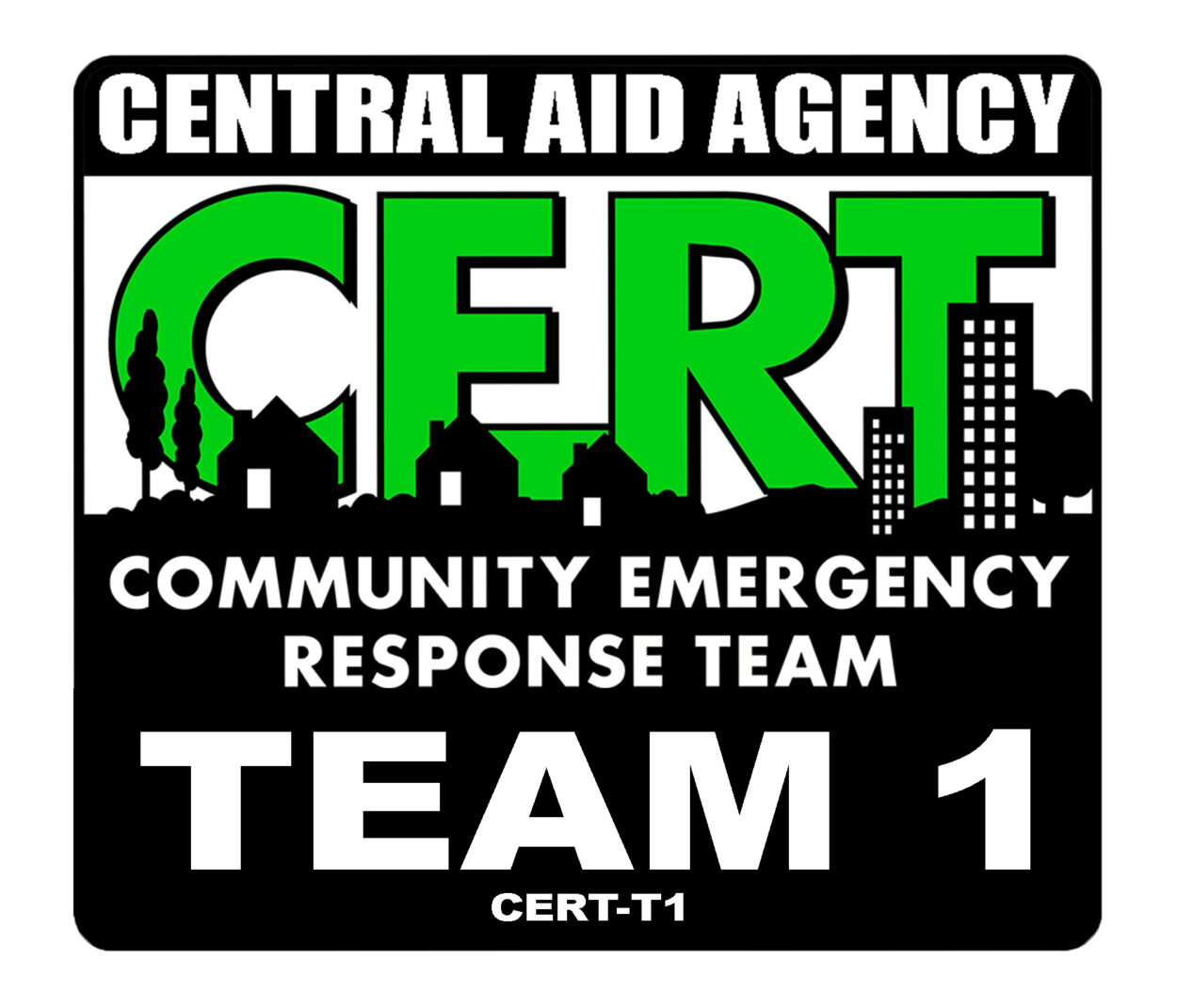
CERT Team 1
CERT Team 1 is a Community Emergency Response Team unit based in Sector 2. The unit is part of Emergency Response Force 1. The unit is comprised of non-rated volunteer CERT personnel and works closely with the Rapid Response Team program in Sector 2.
Photo Gallery
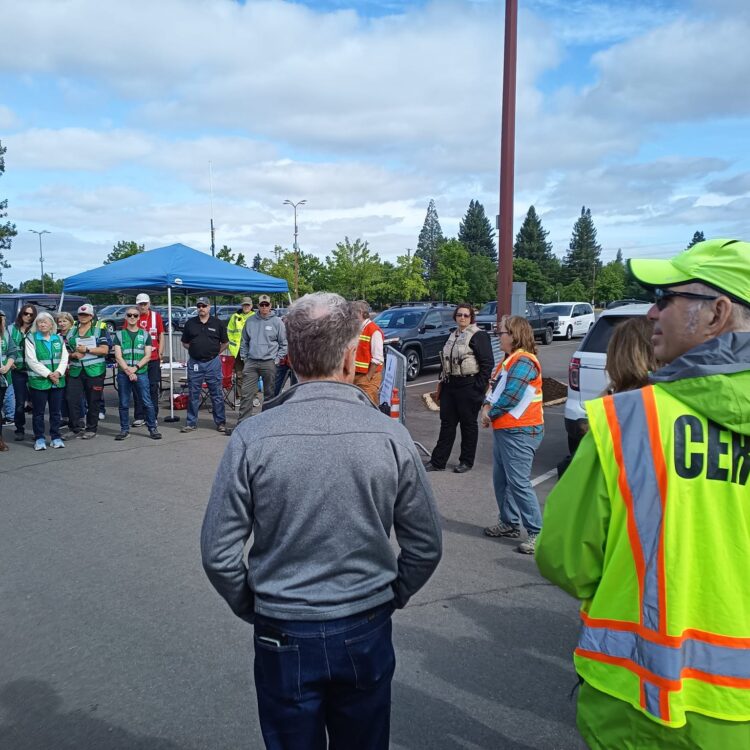
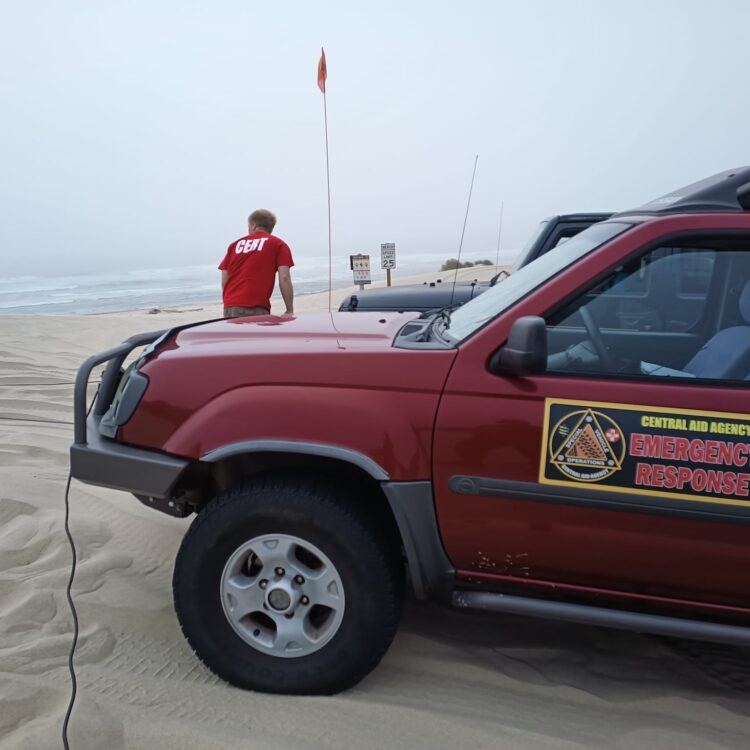


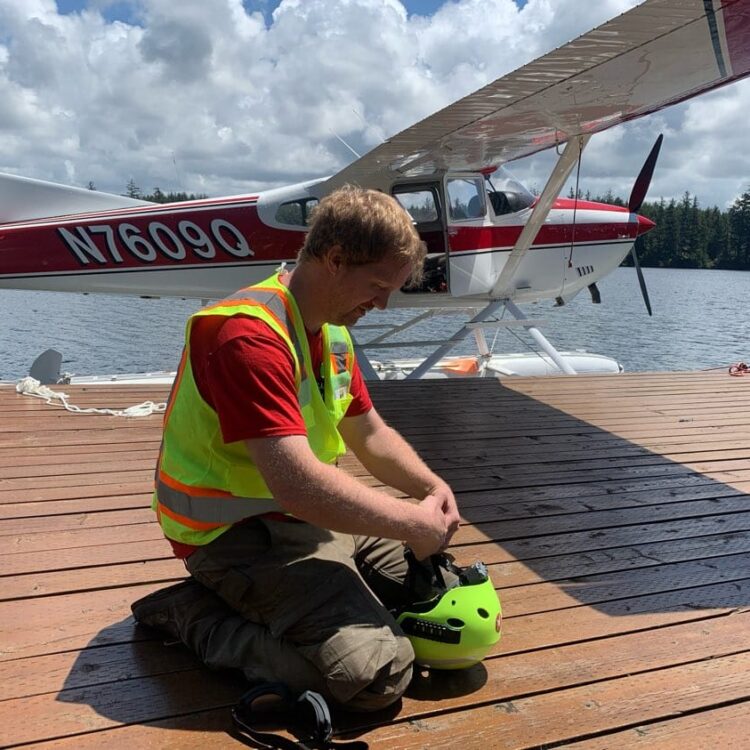
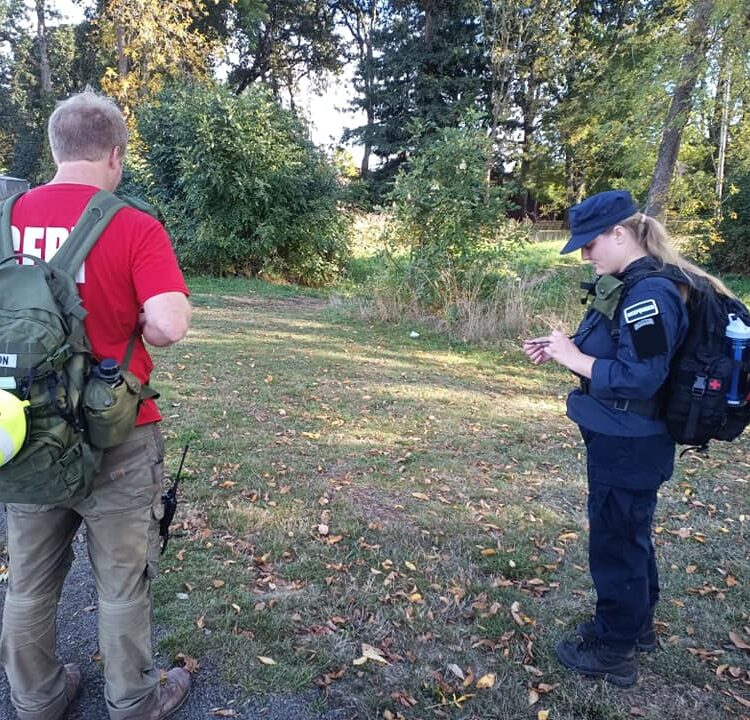
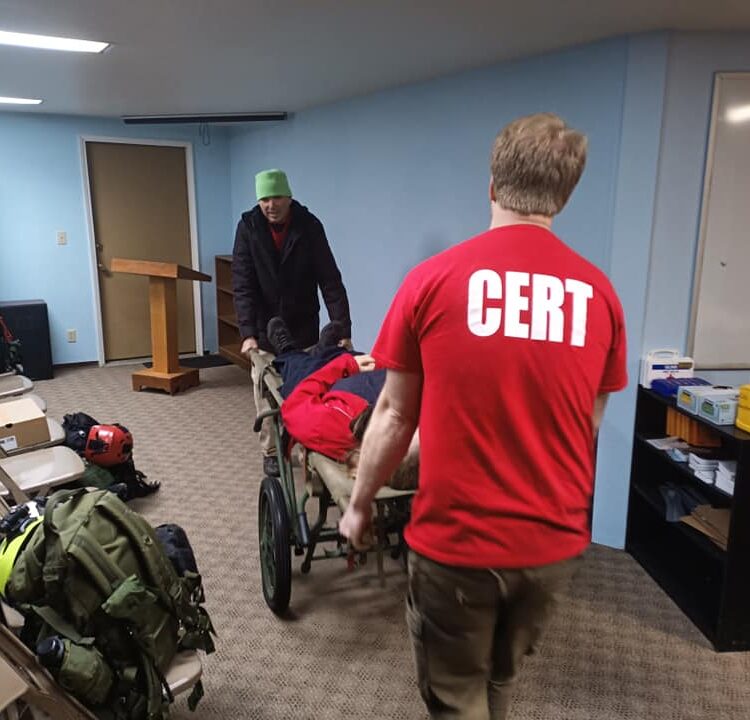

Uniforms of CERT
CERT primarily wears only Red T-shirts with regular street clothes as their uniform, but when in full uniform they wear tops in Forest Green over their Red T-shirts and Black pants (Variant of Color Type 6). Uniforms commonly worn by CERT include:
CERT Service Uniform Class B
CERT Service Uniform Class C
Administrative Uniform with Red Polo and Black Pants Class C
CERT Service Uniform Class D (Standard uniform for most CERT activities)
CERT units are deployable, but consist primarily of community volunteers rather than Rated personnel, so they typically require Type 0 or greater hygiene and appearance requirements. CERT hygiene requirements include the stipulation that hair and facial hair must be practical for disaster response type activities and any CERT in a role that requires a mask or respirator must be clean shaven.
Type 3 or greater hygiene and appearance requirements is typically required for any Rated personnel assigned to the CERT program.
